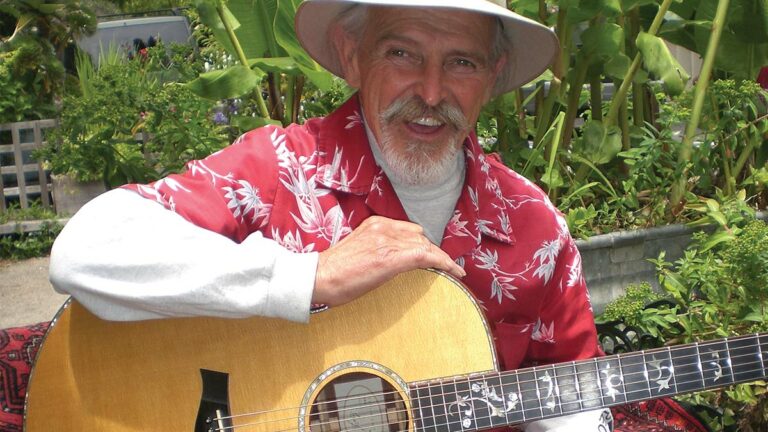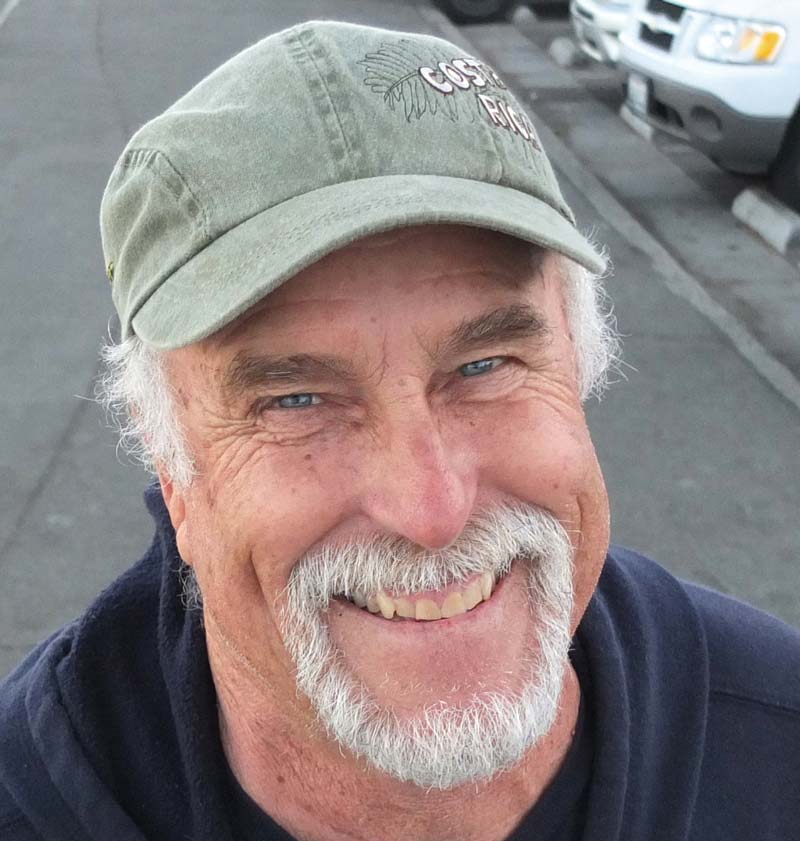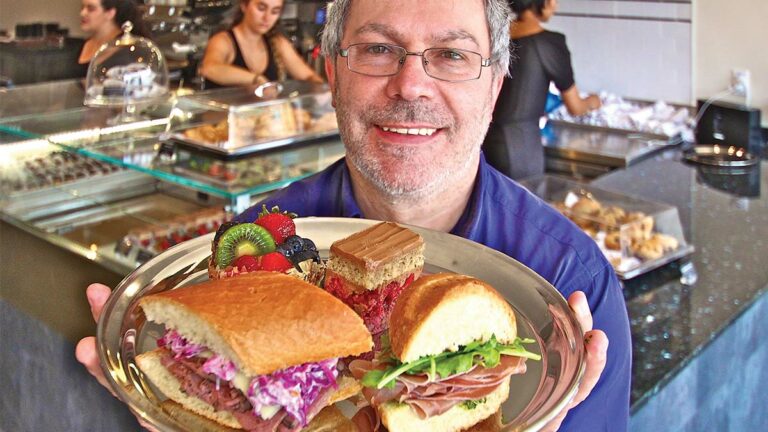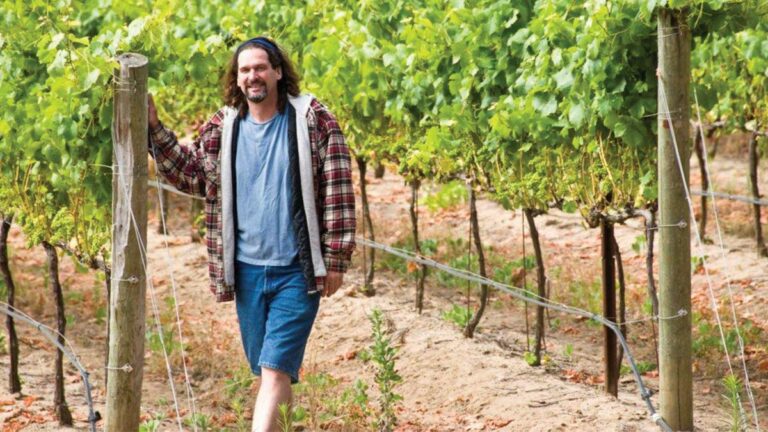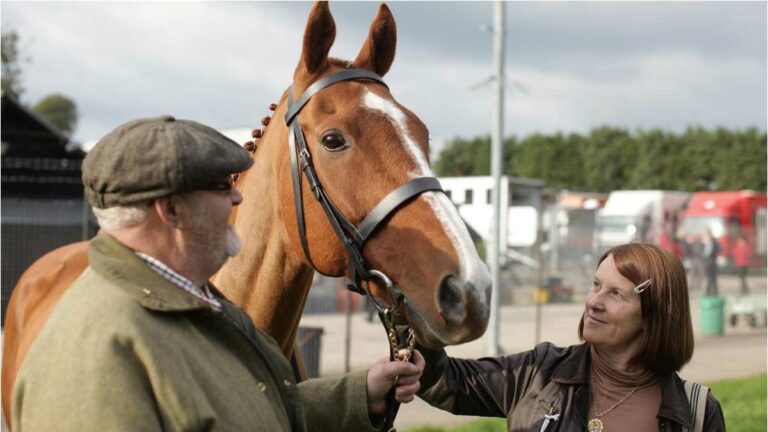WEDNESDAY 6/22
WORLD MUSIC
ATASH
They may be from Austin, but Atash’s roots spread throughout the world. For six straight years, this eight-piece band has won Austin’s Best World Music Band honors for their unique blend of Middle Eastern, Persian and African music with Western energy. Touring everywhere from China to Mexico, Atash has gained a cult following with their message of love, unity and peace. There aren’t many other groups that give listeners tasty jams with stand-up bass, tablas, sitars and flamenco guitars all in one song. MAT WEIR
INFO: 8:30 pm. Moe’s Alley, 1535 Commercial Way, Santa Cruz. $10/adv, $15/door. 479-1854.
AMERICANA/WORLD
DAYAN KAI
For years, Dayan Kai was one of Santa Cruz’s most beloved musicians—a multi-instrumentalist who could play pretty much anything he got his hands on, and a kind-hearted human who cared deeply about making the world a better place. Several years ago, Kai left the area for the Hawaiian Islands, leaving his local fan base wanting more. On Wednesday, he brings his unique blend of Americana, world music, jazz and rock to Don Quixote’s for a rare homecoming show. CJ
INFO: 7:30 p.m. Don Quixote’s, 6275 Hwy. 9, Felton. $12/adv, $15/door. 335-2800.
THURSDAY 6/23
JAZZ VOCALS
DUCHESS
A vocal trio rooted in jazz, Duchess isn’t restricted to one genre, preferring instead to explore a breadth of American music traditions, including folk, pop, country and rock.
Known to pull from the likes of Cole Porter, Leonard Cohen, Duke Ellington and Nellie McKay, the members of Duchess—Amy Cervini, Hilary Gardner, and Melissa Stylianou—choose songs that speak to their unique musical sensibilities. On its self-titled debut album, the New York-based trio pays tribute to legendary vocal group the Boswell Sisters, while putting a modern twist on the old favorites. CJ
INFO: 7 p.m. Kuumbwa Jazz, 320-2 Cedar St., Santa Cruz. $20/adv, $25/door. 427-2227.
HIP-HOP
BERNER
Any fan of hip-hop or marijuana—probably both at the same time—knows the name Berner. The Bay Area hip-hop artist has been freestyling since high school, and dropped his debut album, Dirty Sneakers … Plenty Ways to Get It, in 2007. To date, he has more than 20 albums on iTunes, collaborating with Bay Area heavyweights Messy Marv, San Quinn, and the late Jacka. Along with building his music empire, Berner has also been a major player in the medicinal marijuana industry, started the Cookies clothing brand, and Hemp2o vitamin water infused with hemp seed oil. On Thursday, expect to see—if you can, through all the smoke—Kool John and Anonymous the Dude on Berner’s “Best Thang Smokin’” tour. MW
INFO: 9 pm. Catalyst Club. 1011 Pacific Ave., Santa Cruz. $35. 429-4135.
FRIDAY 6/24
BLUES
BIG JON ATKINSON
Big Jon Atkinson was born in 1988, by which point the blues had long been considered old-timey music by the mainstream. Yet Atkinson may very well be one of the most talented blues players on the scene today. He’s not only gotten the stamp of approval from some of the genre’s veterans, like Kim Wilson, they’re actually clamoring to work with him. Atkinson captures the soul of authentic blues music, but breathes new life into it in a way most young players are unable to do. AARON CARNES
INFO: 9 p.m. The Pocket, 3102 Portola Drive, Santa Cruz. $5. 475-9819.
SATURDAY 6/25
BLUES/ROOTS
DAVID BROMBERG
Dubbed the godfather of Americana, multi-instrumentalist singer-songwriter David Bromberg has a résumé that leaves most singer-songwriters standing in awe. From Bob Dylan, Doc Watson, Emmylou Harris and the Reverend Gary Davis to the Beastie Boys, George Harrison and Willie Nelson, Bromberg has collaborated with many of the finest American artists of all time. A fixture in the Greenwich Village folk scene of the mid-’60s, Bromberg continues to push American music forward with a lively blend of folk, the blues, Irish music, bluegrass, gospel and more. On Saturday, the legendary artist brings his quintet to Santa Cruz. CJ
INFO: 8 p.m. Rio Theatre, 1205 Soquel Ave., Santa Cruz. $28/gen, $40/gold. 423-8209.
GOTH-POP
CASKET GIRLS
Ryan Graveface, who runs small indie Graveface Records, fell in love with Casket Girls, and had to put their record out. He’d been working with sisters Phaedra and Elsa Greene for a little while, when one day he went to their house and found them singing weird songs under the tree in their Georgian yard. They were weeping, reciting poetry and just freaking out. When he heard the demo they’d made under these circumstances it blew his mind. It was incredibly emotive, eerie and catatonic indie-pop. He did his best to make them replicate the demo for the official album. Everyone involved slapped the “goth-pop” label on it, but really it’s much weirder than that. AC
INFO: 9 p.m. Crepe Place, 1134 Soquel Ave., Santa Cruz. $10. 429-6994.
MONDAY 6/27
JAZZ
JOHN PATITUCCI ELECTRIC GUITAR QUARTET
John Patitucci has thrived for more than three decades as one of jazz’s most commanding bassists. Equally jaw-dropping on the six-string electric and acoustic double bass, he’s attained legendary status as a studio ace and astonishing improviser. He gained fame by simultaneously anchoring Chick Corea’s Akoustic and Elektric Bands, and for the past decade has provided a cohesive presence amid the churning maelstrom of Wayne Shorter’s celebrated quartet. He’s also recorded a dozen albums focusing on his own compositions. Featured on his recent album Brooklyn (Three Faces Records), his Electric Guitar Quartet is a quietly volatile chamber jazz ensemble featuring guitarists Adam Rogers and Steve Cardenas and the remarkably attentive drummer Nate Smith (an essential force on acclaimed recordings by bassist Dave Holland and tenor saxophonist Chris Potter). ANDREW GILBERT
INFO: 7 p.m. Kuumbwa Jazz, 320-2 Cedar St., Santa Cruz. $30/adv, $35/door. 427-2227.
TUESDAY 6/28
CHAMBER
3 LEG TORSO
Though you might have not heard of Portland five-piece 3 Leg Torso, you’ve likely heard their music in movies or on TV—they have a very cinematic sound, and filmmakers know it. Originally a trio, they wanted to create modern chamber music with a violin, cello and an accordion. As a five-piece, the instrumentation expanded to xylophone, French horn, and other chamber instruments. While this music might appeal to classical music fans, the influences they draw from (Latin, Klezmer, tango) give them a much broader appeal, and fits in nicely at a venue like Don Quixote’s. AC
INFO: 7:30 p.m. Don Quixote’s, 6275 Hwy. 9, Felton. $12/adv, $15/door. 335-2800.
IN THE QUEUE
BLANK TAPES
West Coast surf/rock/psych. Thursday at Catalyst. Read the preview here.
DAVE ALVIN & PHIL ALVIN
Americana sibling royalty. Thursday at Moe’s Alley
PALMER SQUARES
Hip-hop out of Chicago. Friday at Blue Lagoon
BUCKETHEAD
Insanely prolific, rock guitar shredder. Sunday at Catalyst
JESSE DANIEL
Santa Cruz-based, roots singer-songwriter. Monday at Don Quixote’s




